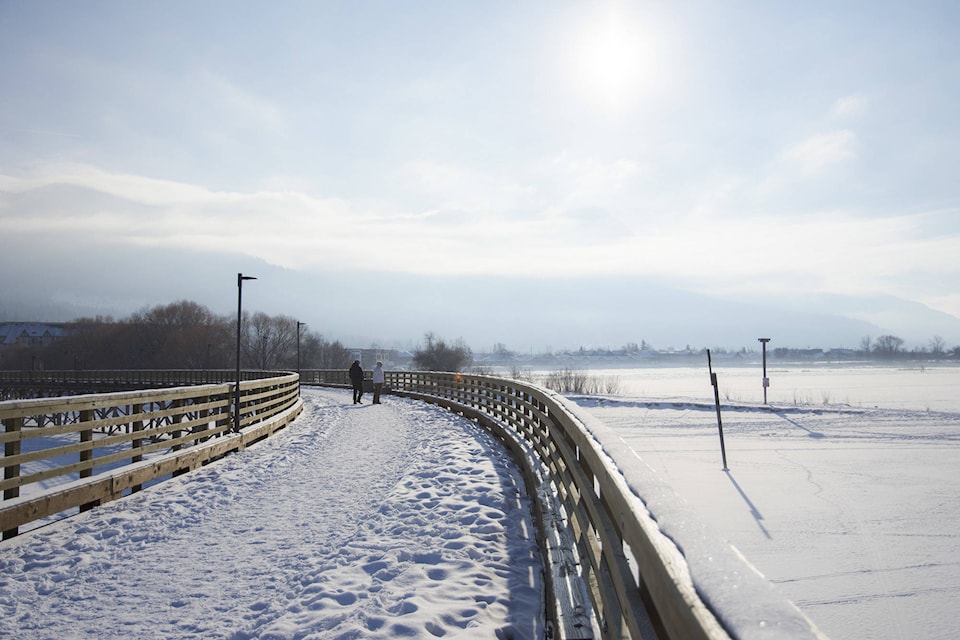Temperatures are rising in the Shuswap after a period of heavy snowfall that saw snow packs in the basins that feed into Shuswap Lake and rivers in the area swell beyond normal levels.
The conditions have local governments and citizens watching the weather closely and making preparations in case of a repeat of the flooding the region saw last spring.
According to the provincial snow survey and water supply bulletin drawn from measurements taken on March 1, the average of all snow measurements taken across the province is 119 per cent of normal; this is a significant increase from the 108 per cent of normal recorded at the start of February.
Snow packs exceeding 130 per cent of normal are present in the areas that feed the Okanagan basin. The Lower Fraser, South Thompson, Upper Columbia and West Kootenay basins are also experiencing snow packs between 100 and 130 per cent of normal.
The report says the heavy snow packs will lead to an increased seasonal risk of flooding in the Southern Interior and the Kootenays.
Seasonal runoff forecasts are listed as well above normal for parts of the Southern Interior including the Okanagan, Similkameen and Nicola.
“Snow pack is one element of seasonal flood risk during B.C.’s freshet season. Weather patterns during the snow melt season play a critical role in whether or not flooding occurs. Intense or prolonged rainfall and extreme temperatures are important factors that can lead to flooding, even for areas with a near normal snow pack,” the bulletin reads.
Forecasts indicate temperatures will rise before transitioning to a period of colder and wetter weather towards mid March.
Local governments are taking notice of the warming trend and making preparations for the freshet.
Derek Sutherland, the Columbia Shuswap Regional District’s (CSRD) protective services team leader said the CSRD is stocking up on sandbags and choosing locations to deploy the supply they do have.
He added the CSRD have met with their provincial partners to develop strategies for combined response and mitigation efforts should flooding take place.
“People are concerned with the forecasted warmer weather and the potential for snow melt, however, from a flood perspective, we are happy that the melt has started fairly early. The hope is to have a more gradual snow melt so the moisture is absorbed into the watershed at a slower, more sustainable rate,” Sutherland said.
Sutherland suggests homeowners who are concerned about moisture infiltrating their homes can clear the snow away from their foundations.
The City of Salmon Arm is already working to move snowbanks and windrows to help expose curbs and catch basins to assist with drainage as the snow melts.
City director of engineering and public works Rob Niewenhuizen said city staff will also be checking storm sewer inlet and outlet structures over the next few weeks in anticipation of the snow melt. He said it will take some time to cover the whole city, so if residents see large puddles forming on the roads the should contact the public works department at 250-803-4080 or at 250-803-2535 after normal business hours.
“If residents are removing snow from around their homes we ask that they keep any snow on their property, as placing this snow on the street is potentially dangerous and can block drainage,” Niewenhuizen said.
A March 5 lake-level update posted on the website Shuswap Lake Watch said looking at the long term forecast this year will be different from last year.
“We will see a quick disappearance of the low elevation snowpack but the snow melt in the mountains will be holding back for a few more weeks. This will give the lake some time to drain out most of its initial snow melt and rain water before receiving the snow water from the well above mountain snowpack. Therefore, with some luck lake levels may not reach flood stage this year,” it reads.
